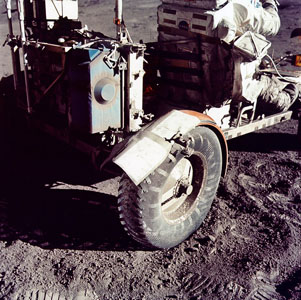 Still Water co-director Jon Ippolito takes a look at emblematic cases of the transition from subversion through conversion to development in connections between art and industry in the last fifty years. This talk was first presented at the conference Subversion, Conversion, Development at the University of Cambridge, organized by the Centre for Research in the Arts, Social Sciences, and Humanities (CRASSH), 25 April 2008.
Still Water co-director Jon Ippolito takes a look at emblematic cases of the transition from subversion through conversion to development in connections between art and industry in the last fifty years. This talk was first presented at the conference Subversion, Conversion, Development at the University of Cambridge, organized by the Centre for Research in the Arts, Social Sciences, and Humanities (CRASSH), 25 April 2008.
LEFT: Duct tape holding together the Apollo 17 moon buggy.
 One of this conference's most consistent threads is how the relationships established around a tool are more important than its innards. And whether the relationships surround cellos or pigs, dogs' teeth or computers, what we've all been asking for is that the tools be adaptable and the relationships reconfigurable.
One of this conference's most consistent threads is how the relationships established around a tool are more important than its innards. And whether the relationships surround cellos or pigs, dogs' teeth or computers, what we've all been asking for is that the tools be adaptable and the relationships reconfigurable.
We've seen how this agility is important when introducing gadgets into the indigenous world, and how it helps explain successes--like Jerome Lewis's adaptation of mapping software for Congolese hunter-gatherers--and failures--like Indonesian cell phones that don't work in the highlands and hence exacerbate social inequality.
For my part, I'd like to turn this analysis back on my own Euro-ethnic culture, to examine the interface between social groups that encourage or resist reconfiguration. And if I make it to the end of my 15 minutes of fame, I hope to turn the colonial paradigm on its head, asking how we might deploy indigenous models of tool-people relations in my technology-saturated society.
ABOVE: dogs' teeth from Papua New Guinea.
In Euro-ethnic society, it's easy to find social groups that make tools they don't want anyone else to mess with. I'm presenting on one of those tools right now, and its glowing fruitlike emblem is the group's totem. Corporations like Apple, Adobe, and Microsoft want control over the "fruits" of their efforts. They enforce this control in blatant ways: Microsoft sends cease-and-desist letters to a teenager named Mike Rowe who writes software. And they enforce this in subtle ways: pouring so much gobbledygook into Microsoft Word's underlying code that no one could possibly translate Word documents for other applications.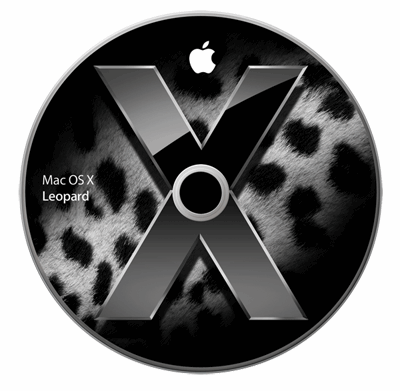 What is less well known is that for hierarchies of control to achieve their missions, they must frequently rely on networks of unfettered creativity. Both Apple's signature operating system OS X and its proprietary browser Safari are built on pre-existing applications they borrowed from the open source community. Apple has at least been public about this reuse; Microsoft only admitting using open-sourced code in Hotmail and Windows after curious programmers found it there.
What is less well known is that for hierarchies of control to achieve their missions, they must frequently rely on networks of unfettered creativity. Both Apple's signature operating system OS X and its proprietary browser Safari are built on pre-existing applications they borrowed from the open source community. Apple has at least been public about this reuse; Microsoft only admitting using open-sourced code in Hotmail and Windows after curious programmers found it there.
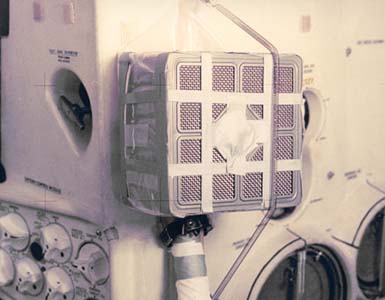 Perhaps even more ironically, corporations like Microsoft try to encourage reconfigurability during the design phase of their products, by means of provisional "tiger teams" tasked with lateral thinking. For its part, NASA--the US government's technological dream team--has recently confessed the critical role that duct tape has played in its space missions, from the ad hoc re-creation of a carbon-dioxide scrubber that saved the lives of Apollo 13 astronauts to the repair of a moon buggy fender in Apollo 17.
Perhaps even more ironically, corporations like Microsoft try to encourage reconfigurability during the design phase of their products, by means of provisional "tiger teams" tasked with lateral thinking. For its part, NASA--the US government's technological dream team--has recently confessed the critical role that duct tape has played in its space missions, from the ad hoc re-creation of a carbon-dioxide scrubber that saved the lives of Apollo 13 astronauts to the repair of a moon buggy fender in Apollo 17.
Unfortunately, even tech industries that embrace lateral thinking among their workers almost always discourage it among their users. Hardware on its way out of the plant is slapped with a "No User-Serviceable Parts" sticker; software gets shrink-wrapped with an End User License Agreement that makes Moby Dick look like light reading. And even vaunted R&D labs expect moneymaking outcomes in return for giving their researchers creative slack; the unofficial motto of the famous telecom-sponsored thinktank Bell Labs was, "The less it looks like a phone, the more it had better look like a Nobel Prize." TOP: Duct-taped air filter on Apollo 13.
TOP: Duct-taped air filter on Apollo 13.
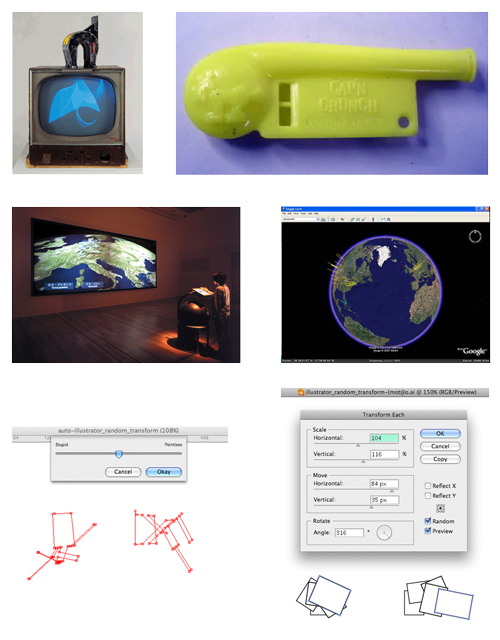 Sadly for the would-be technocrats, the shiny gadgets they spent millions to lock down are often putty in the hands of hackers, artists, and other users keen on creative misuse. These rogues soon learned that you could deform a TV signal by lugging a magnet on top of the set; that you could hack AT&T's national phone network by blowing into a receiver with the whistle that came in a box of Captain Crunch cereal; that you could defeat industry-standard DRM by sticking a piece of tape on the rim of the CD. If duct tape could salvage a billion dollar spacecraft, it could also wreck a billion dollar music industry.
Sadly for the would-be technocrats, the shiny gadgets they spent millions to lock down are often putty in the hands of hackers, artists, and other users keen on creative misuse. These rogues soon learned that you could deform a TV signal by lugging a magnet on top of the set; that you could hack AT&T's national phone network by blowing into a receiver with the whistle that came in a box of Captain Crunch cereal; that you could defeat industry-standard DRM by sticking a piece of tape on the rim of the CD. If duct tape could salvage a billion dollar spacecraft, it could also wreck a billion dollar music industry.
To be sure, some corporations learned to mooch off artists as well as off open-source programmers. Launched in 2005, Google Earth bears a striking resemblance to ART+COM's Terravision from a decade earlier. Adrian Ward and Geoff Cox intended their 2002 software Auto-Illustrator to be a wacked out version of Adobe's Illustrator vector graphics application, which is why it includes seemingly random features like a slider that runs between "Stupid and Pointless." Yet in seeming homage to its parody, recent releases of Illustrator have begun to include their own random image and placement generators.
The influence of late 90s Internet art on the so-called Web 2.0 revolution is unmistakable.
FROM UPPER LEFT: Nam June Paik, Magnet TV (1965), Whitney Museum of American Art; Captain Crunch whistle used for phone phreaking; Art+Com's Terravision (ca 1995); Auto-Illustrator (2002); Adobe Illustrator CS3 (2007).
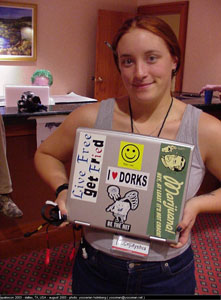 In the hands of artists or programmers, hacking is a means to gain technical capabilities previously unavailable. But you can hack your way out of a social box as well as a technological one. Graffiti, tattoos, and laptop stickers are all hacks in this social sense, but so is sharing code for cracking games or sharing DVDs. Most hacks are visible to anyone who knows where to look for them, and as social signals they serve to connect outskirters looking for a community of their own.
In the hands of artists or programmers, hacking is a means to gain technical capabilities previously unavailable. But you can hack your way out of a social box as well as a technological one. Graffiti, tattoos, and laptop stickers are all hacks in this social sense, but so is sharing code for cracking games or sharing DVDs. Most hacks are visible to anyone who knows where to look for them, and as social signals they serve to connect outskirters looking for a community of their own.
And here the lessons of creativity in the indigenous world can help make sense of why so many technically savvy artists spend late nights subverting tools and their makers instead of just crafting beautiful images with PhotoShop. Marilyn Strathern writes of the Malanggan cloth of Papua New Guinea, whose requirement to be made and remade by different people binds them into complex social networks. For such creators, the object is less relevant than the kinship it creates.
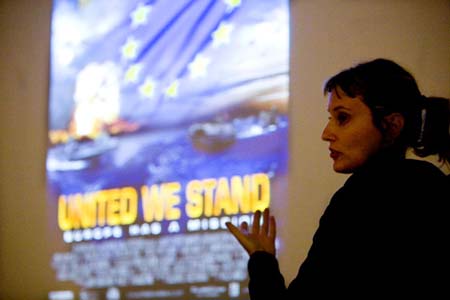
 It's that same desire to belong to a close-knit community that drives many of the past decade's creators operating outside the art world's normal confines. Like many Internet artists active in the 1990s, the renowned Italian hacker-artists Eva and Franco Mattes frequented small media centers in Eastern Europe cities. While it was their online stunts that may have earned them the invitation to such festivals and exhibitions, the art took a backseat to companionship and collegiality once they arrived--from free-ranging conversations about the revolutionary potential of the net to sleeping off a hangover the next day on the curator's couch.
It's that same desire to belong to a close-knit community that drives many of the past decade's creators operating outside the art world's normal confines. Like many Internet artists active in the 1990s, the renowned Italian hacker-artists Eva and Franco Mattes frequented small media centers in Eastern Europe cities. While it was their online stunts that may have earned them the invitation to such festivals and exhibitions, the art took a backseat to companionship and collegiality once they arrived--from free-ranging conversations about the revolutionary potential of the net to sleeping off a hangover the next day on the curator's couch.
Unfortunately, this social network has largely dissolved now that new media art has "broken into" the mainstream artworld a decade later. Now the Mattes are invited to present their work in LA or New York instead of Ljubljana or Riga. Once installed in the new media art galleries, the work stands by itself; all they get from the curator is a handshake at the opening reception. The Mattes lament that the face-to-face social fabric that once underpinned and echoed art on the Internet is giving way to the art world's customary fetish for the object rather than the relations surrounding it.